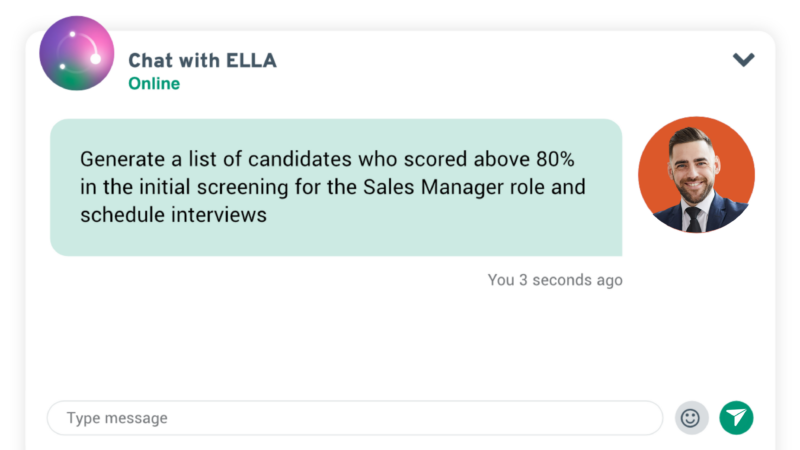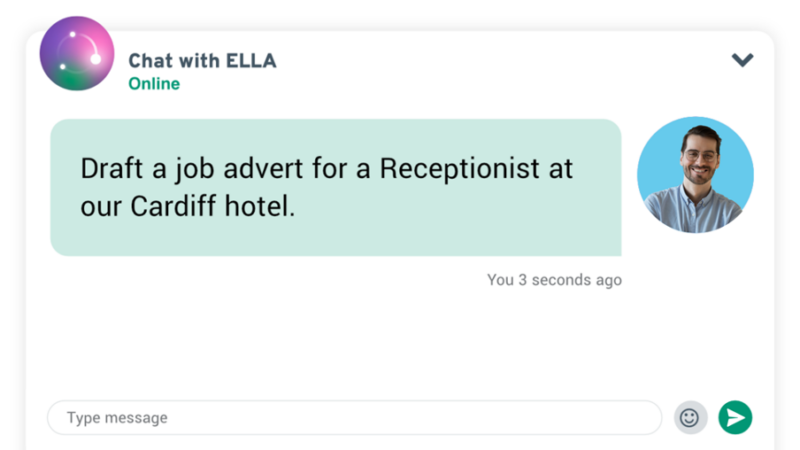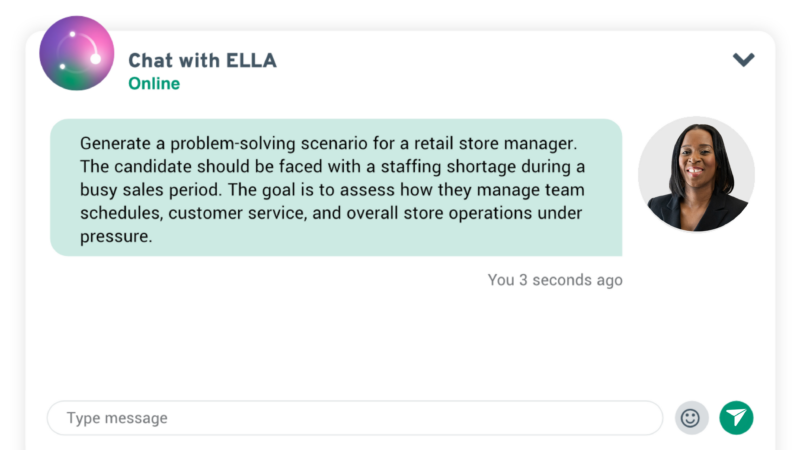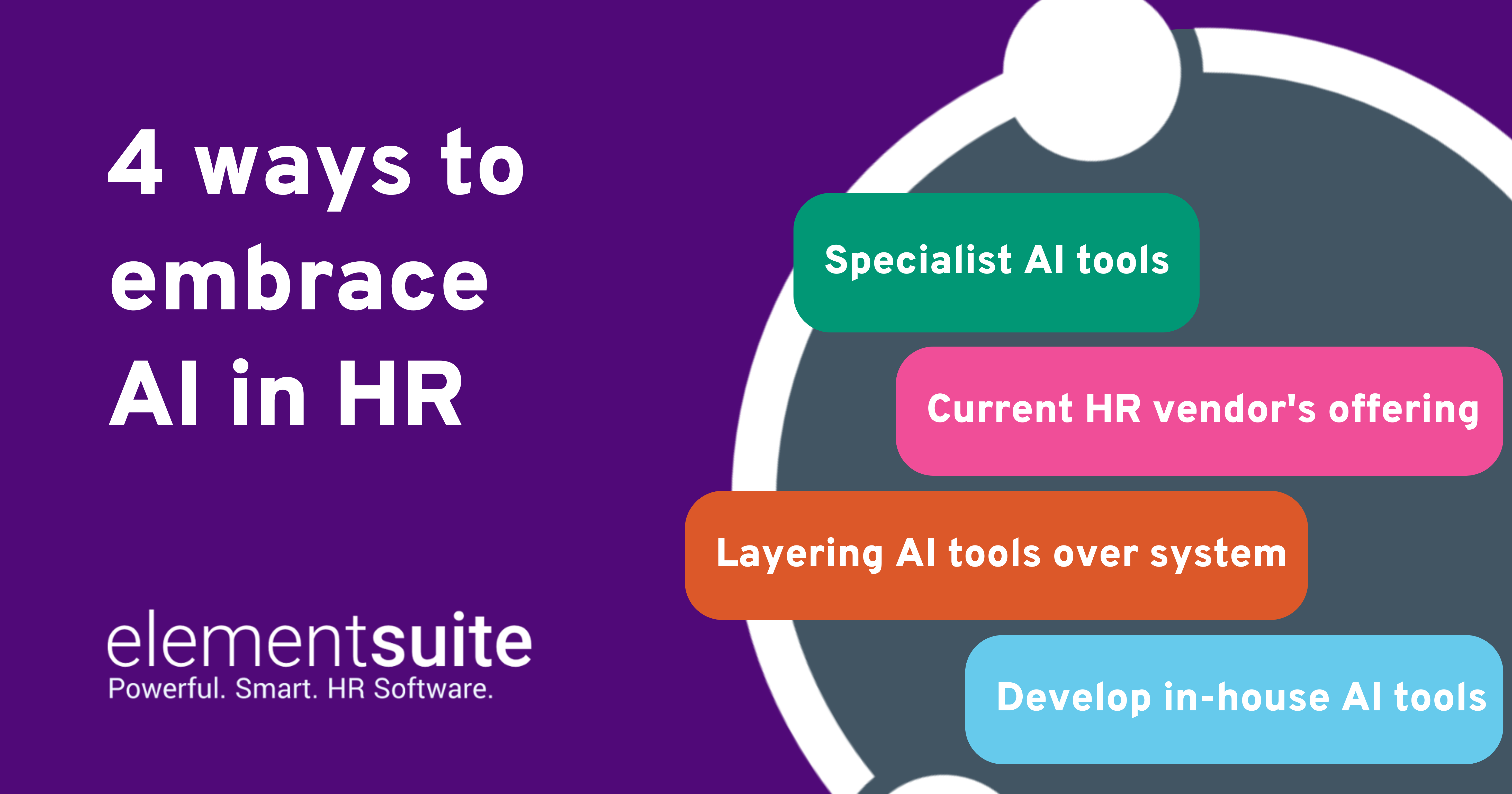In today’s HR landscape, AI is no longer just a buzzword — it’s a game-changer for talent acquisition, management, and retention. With 60% of HR professionals ready to embrace AI, its potential to transform people processes is widely recognised. In recruitment, AI not only automates repetitive tasks but also unlocks valuable insights from vast amounts of data. However, alongside these benefits come challenges. In this article, we’ll explore the key hurdles HR professionals face when integrating AI into recruitment and offer practical solutions to help you navigate them successfully.
Before diving in, be sure to check out Part 1, where we discuss how AI can enhance your talent acquisition strategy by streamlining processes and providing actionable insights.
HR Admin challenges and how to solve them
Let’s dive right into the key challenges HR teams may encounter when implementing AI in their recruitment processes, and how these can be overcome.
Compatibility problems when implementing and integrating AI systems
When introducing AI into your recruitment processes, one of the biggest obstacles you might face is compatibility with your existing HR systems. Many organisations use legacy systems that don’t seamlessly integrate with new AI solutions. This can create bottlenecks in workflows, from job postings to candidate tracking.
Solve this with seamless implementation
To solve this, you need a seamless AI implementation that complements your current HR infrastructure. This could involve collaborating with your IT team or third-party vendors to ensure the AI system integrates smoothly.
A tool like ELLA is able to seamlessly layer over your existing HR system. This involves extracting and maintaining a foundation security model from your current HRIS. This will then open up the possibilities of users to be appropriately authenticated and authorised to safely run AI models over any of your company’s PII, IPP and confidential company information.
See the 4 ways to embrace AI in HR here
Comprehensive training for HR staff is also essential to fully leverage the benefits of AI systems, ensuring they are confident in using new technologies effectively. Tools like ELLA, which seamlessly integrate into your existing HRIS, reduce the complexity of adoption, allowing your team to focus on optimising talent acquisition processes without being bogged down by cumbersome system changes.

Algorithm transparency and ethical AI use of AI in recruitment
One of the key concerns with AI in hiring is how it reaches decisions. Candidates and HR professionals alike want to know that AI is being used ethically, without biases creeping into the algorithms. Transparency is crucial—not only does it ensure fairness, but it also helps build trust in the recruitment process.
Solve this with improved data security
A robust data governance framework can make all the difference here. Your AI systems should be regularly audited to identify potential biases, and data security should be a top priority. For example, ELLA operates within a secure environment, adhering to strict data protection standards like GDPR. This level of security helps protect candidate privacy and ensures that recruitment processes remain ethical.
Regularly reviewing and updating your AI algorithms is crucial to maintaining fairness in recruitment. By working closely with your AI tool vendors or data specialists, you can ensure that bias detection mechanisms are in place, helping you identify and correct any imbalances in the data.
This proactive approach ensures that the information being processed by your AI tools remains representative and neutral, allowing you to build a more diverse and inclusive talent pool. As an HR professional, this level of oversight helps you stay confident that your recruitment processes are ethical and free from unintended bias.
Potential for bias in AI algorithms
AI has the potential to learn from past data; this can include learning biases. For example, if your historical data favours certain demographic groups over others, the AI might inadvertently perpetuate those biases, leading to unfair hiring outcomes.
Solve this by ensuring fairness
To prevent this, it’s critical to ensure that the data used to train AI algorithms is neutral. Regular reviews and tests of the AI models should be carried out to monitor for signs of bias.
“If we don’t understand HR data bias and let it guide key employment decisions, it will shackle us to the mistakes of yesterday, perpetuating discrimination and undermining diversity efforts. […] AI for HR has the power to revolutionise the workplace by eliminating bias, analysing data objectively and helping HR professionals make better-informed choices to create a fairer, more diverse, and inclusive workforce.” – Steve Elcock, CEO & Founder, elementsuite
Human-AI imbalance
A common concern is the fear that AI could replace human judgement in recruitment. While AI can automate many aspects of hiring, it’s vital to remember that recruitment is not purely a data-driven task—intuition, empathy, and cultural fit are elements that humans still assess best.
Solve this by balancing automation with the human touch
The key here is balance. AI should be used to streamline repetitive tasks, such as initial CV screening or interview scheduling, but final decisions should always involve human input. For example, ELLA assists HR professionals by taking over time-consuming admin tasks, allowing you to focus on strategic decision-making, candidate engagement, and cultural fit assessments.

By blending AI’s efficiency with your expertise in understanding people, you can create a recruitment process that not only operates more smoothly but also ensures thoughtful, fair, and informed hiring decisions.
Addressing data quality and accuracy issues
Accurate data is the foundation of any AI system, and when it comes to recruitment, high-quality, up-to-date information is essential for making sound hiring decisions. Poor data—whether incomplete, outdated, or inconsistent—can lead to ineffective recruitment outcomes, wasted time, and frustration for both HR professionals and candidates.
Solve this by strengthening data management with AI
To address data quality issues, a robust data management strategy is key. AI plays a dual role here. First, to function optimally, AI systems rely on well-managed data from the outset. However, once implemented, AI can significantly enhance your ability to maintain data accuracy. For example, AI tools like ELLA can automatically identify gaps or inconsistencies in candidate data, flag outdated information, and streamline the data-gathering process. This not only improves the quality of the data you work with, but also ensures that decisions made using AI are based on the most relevant and current information available.
Furthermore, by integrating AI analytics into your recruitment process, you can gain deeper insights into recruitment trends, candidate behaviours, and skill assessments that manual systems simply can’t capture. ELLA’s ability to access real-time, company-specific data allows for quicker, more informed decision-making, helping to reduce the chances of poor hiring decisions driven by inaccurate data. AI doesn’t just depend on accurate data—it actively contributes to improving it over time, creating a cycle of continuously refined and reliable information for better recruitment outcomes.
Challenges for candidates
As AI becomes more prevalent in recruitment, candidates, too, face a learning curve. It’s important to address the challenges they might encounter, and ensure that your AI-driven processes are transparent and candidate-friendly.
Adapting to AI-driven application processes
The adoption of AI in recruitment means that candidates now need to navigate a more tech-heavy application process. From AI-powered application tracking systems to video interviews analysed by machine learning, this can be daunting for those unfamiliar with such technologies.
Solve this with education on AI in recruitment
One way to help candidates is by providing clear guidance on how AI is used in your hiring process.
Transparency is key—candidates should understand how their data is being used and how AI analyses their applications. This transparency not only builds trust but also empowers candidates to feel more in control of the process. For example, you could provide candidates with an FAQ or a guide that explains each step of the AI process: from how their CV is initially screened to how the AI highlights relevant skills or experience.
This level of transparency not only demystifies the process for candidates but also reduces anxiety and potential scepticism. Additionally, providing feedback based on AI-driven analysis, such as “Your application stood out for these reasons…” can help candidates understand what worked in their favour, creating a more positive experience—even if they aren’t selected.
This approach showcases your organisation’s commitment to fairness and can give you a competitive edge when attracting top talent. By openly communicating how AI is used in the recruitment process, candidates are more likely to engage confidently, knowing their data is handled securely and the process is impartial.
Concerns about privacy and data security
With AI processing vast amounts of personal information, candidates may worry about how their data is being stored and used. Data breaches and misuse of personal information are real concerns, especially in light of GDPR.
Solve this with transparency in data protection
To address these concerns, you need to have robust data protection policies in place. This includes clear communication with candidates about how their data will be used, stored, and protected. AI systems like ELLA offer 24/7 communication, keeping candidates informed and reassured about the safety of their information.
Fear of bias in AI-powered interviews
AI-powered interviews can streamline the recruitment process, but candidates may worry that the technology could misinterpret their responses, assess them unfairly, or make decisions based on incomplete or biased data. This fear can create anxiety and a sense of distrust in the hiring process.
Solve this by communicating a fair, enhanced candidate experience
To address concerns about bias, ensure your AI-powered interviews use tools like Natural Language Processing (NLP) and video analysis, which objectively assess candidates based on their responses and behaviour. These technologies minimise human error and subjectivity, making the process more consistent and fair.
Candidates using AI in the recruitment process
AI isn’t just transforming how HR teams recruit—it’s also changing how candidates present themselves. Many job seekers now use AI tools to optimise their CVs, tailoring them to match job descriptions more closely, and even preparing for interviews using AI-powered platforms that simulate common questions. These tools allow candidates to present highly polished applications, ensuring they pass through initial automated screenings.
However, this presents a challenge for HR professionals. With AI-optimised CVs, it can be harder to assess a candidate’s true experience and authenticity. Highly curated CVs might pass an initial screen but may not always reflect the candidate’s genuine skills or cultural fit. Similarly, candidates who rehearse extensively with AI interview prep tools may seem more polished in interviews, making it difficult to differentiate between well-prepared and genuinely skilled applicants.
Solve this with enhanced assessment techniques
To overcome these challenges, HR teams need to go beyond traditional CV reviews and interviews. AI tools like ELLA can help design more nuanced assessment techniques that provide deeper insights into a candidate’s abilities. For instance, you could implement AI-powered problem-solving scenarios or work simulations that test real-world skills.

Soft skills, such as communication and adaptability, could be evaluated through AI-driven behavioural analysis during video interviews, offering a more well-rounded view of the candidate.
By incorporating these adaptive AI recruitment techniques, you can ensure that you’re assessing candidates on more than just optimised CVs or rehearsed interview answers. This approach gives a more accurate picture of their potential performance and cultural fit, making the recruitment process fairer and more comprehensive
The future of recruitment with ELLA
As AI continues to evolve, the future of recruitment will be defined by how well HR professionals balance the benefits of AI with the need for human oversight. ELLA, an AI tool that can streamline the recruitment process, offers solutions to many of the challenges we’ve discussed.
By integrating AI into your recruitment processes, you’re not just adopting new technology—you’re transforming how your organisation attracts, hires, and retains top talent. AI offers efficiency, accuracy, and valuable insights, but it’s up to you to ensure that these systems work in harmony with your human expertise.
So, are you ready to embrace AI in your hiring processes? Book an ELLA demo today and discover how AI-driven HR solutions can transform your talent acquisition strategy.




